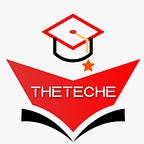Electrical Machine Design — Rotating Machines
Electrical machine design involves application of science and technology to produce cost effective, durable, quality and efficient machines. Also the machines should be designed as per standard specifications. The requirements like low cost and high quality will be conflicting in nature and so a compromise should be made between them.
The electrical machines can be classified into static and dynamic machines. The transformer is a static (stationary) machine. The motors and generators are dynamic (rotating) machines. The transformer converts electrical energy from one voltage level to another voltage level. The rotating machines converts electrical energy to mechanical energy or vice-versa.
The conversion in any electrical machine takes place through magnetic field. The required magnetic field is produced by an electromagnet which requires a core and winding. The basic principle of operation of all electrical machine is governed by Faraday’s law of electromagnetic induction.
Constructional Elements of Transformer
The transformer is a static electromagnetic device used to transfer electrical energy from a high potential (voltage) circuit to low potential (voltage) circuit or vice-versa. It consists of two or more windings which link with a common magnetic field. An iron core serves as a path for magnetic flux.
The constructional elements of the transformer are windings, core, tank and cooling tubes or radiators. A simple transformer has two windings and they are called high voltage winding and low voltage winding. One of the winding is connected to supply and it is called primary. The other winding is connected to load and it is called secondary.
